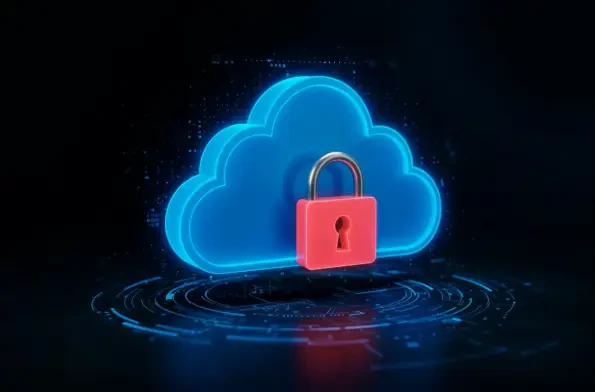What happens when the tools meant to revolutionize cloud computing become the very weapons used to cripple it? A staggering 24,000 IP addresses worldwide are currently exposing Docker’s default port, creating a fertile ground for cybercriminals to exploit. Among the most insidious of these threats is a botnet known as ShadowV2, which transforms misconfigured Docker daemons on Amazon Web Services (AWS) EC2 instances into powerful nodes for distributed denial-of-service (DDoS) attacks. This isn’t just a glitch in the system—it’s a calculated assault on the backbone of modern digital infrastructure, turning efficiency into chaos with chilling precision.
Unmasking a Silent Predator: How ShadowV2 Targets Cloud Infrastructure
In the sprawling ecosystem of cloud computing, Docker has emerged as a cornerstone for deploying applications through lightweight containers. However, when improperly secured, these same containers become gateways for devastation. ShadowV2, a sophisticated botnet, preys on exposed Docker daemons, particularly on AWS EC2 instances, by exploiting lapses in configuration often left open for remote management or testing. This vulnerability allows attackers to infiltrate systems, turning them into pawns in a larger scheme of digital disruption.
The scale of this threat is alarming. With thousands of systems unknowingly at risk, the botnet operates as a DDoS-for-hire service, offering its destructive capabilities to the highest bidder in underground markets. What makes this predator so dangerous is its ability to blend into legitimate cloud environments, mimicking standard operational behaviors to evade detection. This silent infiltration underscores a critical blind spot in many organizations’ security frameworks.
Why ShadowV2 Matters: The Growing Danger of Cloud Exploitation
As businesses race to adopt cloud solutions for scalability and cost-efficiency, the risks tied to these technologies have skyrocketed. Docker’s portability is a double-edged sword—while it streamlines development, misconfigured daemons open the door to exploitation on an unprecedented scale. ShadowV2 capitalizes on this, building a network of compromised systems ready to unleash overwhelming traffic on targeted websites, often without the victim’s awareness until it’s too late.
This isn’t a niche issue confined to a handful of careless entities. The sheer volume of exposed systems—estimated at 24,000 IPs with open Docker ports—paints a grim picture of widespread vulnerability. The botnet’s existence highlights a broader trend: cybercriminals are increasingly leveraging cloud-native tools to craft attacks that are harder to trace and mitigate. This convergence of innovation and malice demands urgent attention from every organization relying on cloud infrastructure.
Inside ShadowV2: A Botnet Engineered for Chaos
Delving into the mechanics of ShadowV2 reveals a chilling level of ingenuity. Attackers begin by scanning the internet for vulnerable Docker daemons, gaining unauthorized access to deploy malicious payloads on compromised AWS EC2 instances. Rather than relying on prebuilt malicious images, they use a generic “setup” container to install custom malware directly onto the host, a tactic that enhances stealth and adaptability.
The botnet’s arsenal is equally impressive, featuring advanced attack methods like HTTP/2 rapid resets and massive HTTP floods. It even boasts the ability to bypass Cloudflare’s “Under Attack Mode,” a protective feature designed to shield websites from such assaults. Powered by a Go-coded ELF binary, ShadowV2 maintains persistent contact with command-and-control servers through heartbeat signals, enabling operators to customize attacks on the fly via a user-friendly interface and OpenAPI-based controls.
This level of sophistication isn’t just technical—it’s strategic. By offering dynamic container deployment and tailored attack options, ShadowV2 positions itself as a premium service in the cybercrime underworld. Its design not only maximizes damage but also minimizes the risk of detection, making it a formidable tool in the hands of those seeking to disrupt digital ecosystems for profit.
Expert Voices: The Dark Evolution of Cybercrime
Cybersecurity professionals are sounding the alarm over ShadowV2’s implications for the future of digital defense. Nate Bill, a threat intelligence engineer, points out that features like HTTP/2 rapid resets and Cloudflare bypass are marketed as “key selling points” in underground forums, attracting a wide range of malicious buyers. This commercialization of advanced attack tools signals a troubling shift in how cybercrime operates, moving closer to the polished models of legitimate software companies.
Shane Barney, Chief Information Security Officer at Keeper Security, adds that the industrialization of DDoS-for-hire services, complete with dashboards and APIs, mirrors enterprise-grade solutions, complicating efforts to distinguish friend from foe in cloud environments. Meanwhile, Kelvin Lim, senior director at Black Duck, warns that traditional defenses like firewalls are no longer sufficient against such threats. He advocates for continuous monitoring and behavioral analytics as essential tools to spot anomalies before they escalate into full-blown attacks.
Defending the Cloud: Strategies to Thwart ShadowV2
Combating a threat as elusive as ShadowV2 requires a proactive, multi-layered approach to cloud security. Organizations must start by hardening Docker configurations, ensuring daemons are not exposed to the internet without necessity and securing port 2375 with strong authentication. This basic step can significantly reduce the attack surface, closing off easy entry points for opportunistic attackers.
Beyond configuration, adopting a zero-trust model is critical. Every interaction across containers, APIs, and workloads should be verified, regardless of perceived trustworthiness. Coupled with continuous monitoring tools that provide deep visibility into container activities, this approach helps detect unusual patterns indicative of ShadowV2’s presence. Enforcing least-privilege policies further limits potential damage by restricting access within containerized environments.
Education also plays a pivotal role. Training IT teams to recognize misconfiguration risks and adhere to best practices for Docker and AWS EC2 setups can prevent human error from becoming a gateway for attackers. By combining technical safeguards with informed personnel, businesses can build a robust defense against this botnet and other cloud-native threats, staying ahead of adversaries who thrive on oversight.
Reflecting on a Digital Battleground
Looking back, the emergence of ShadowV2 served as a stark reminder of the vulnerabilities embedded within the very innovations that powered digital transformation. It exposed how misconfigured cloud tools, once heralded as game-changers, became instruments of chaos in the hands of determined cybercriminals. Each compromised system stood as a testament to the urgent need for vigilance in an increasingly interconnected world.
The path forward demanded more than just patching technical flaws; it required a cultural shift toward prioritizing security at every level of operation. Strengthening cloud defenses through rigorous configurations, zero-trust principles, and ongoing education emerged as non-negotiable steps to safeguard against future threats. As the cyber landscape continued to evolve, the lessons learned from this botnet’s reign of disruption offered a blueprint for resilience, urging organizations to anticipate and adapt to the next wave of unseen dangers.













